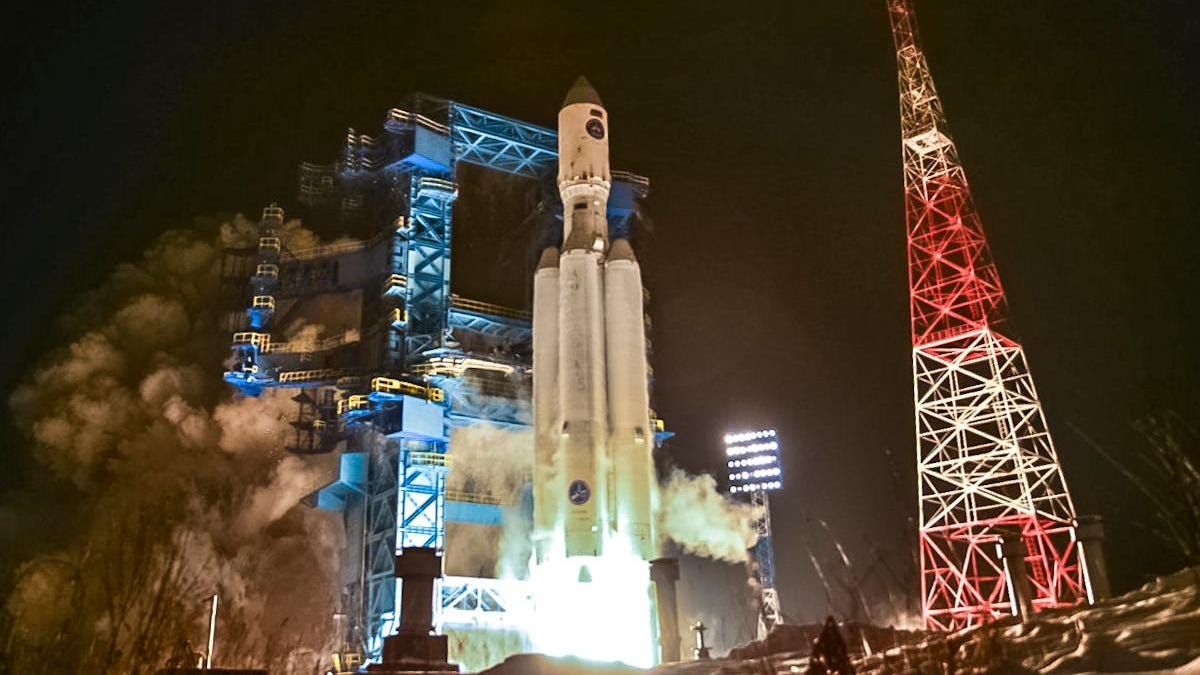
Jonathan McDowell, an astronomer at the Harvard-Smithsonian Center for Astrophysics, provided the coordinates, showing the crash site as being in the South Pacific and nowhere near populated areas. There are currently no reports of injuries. It’s “possible that a small fraction of it reached the ocean surface,” McDowell told Gizmodo in an email. The reentry was “not controlled,” as the “object was completely dead,” he added.
It wasn’t supposed to end like this. Launched from a Russian Angara A5 heavy-lift rocket on December 27, 2021, the Persei upper stage was supposed to reach geostationary orbit, but the necessary second engine burn failed to happen, SpaceNews reports. The Persei upper stage eventually fell back to Earth after drifting in a steadily decaying orbit for nine days.
The Angara A5 blasted off from the Plesetsk Cosmodrome in Mirny, Russia, with a mock payload, in what was the third demonstration of the launch system. Previous test flights with dummy payloads were successfully completed in 2014 and 2020. The AFP news agency reports that the program has “suffered a series of failures in recent years.” This latest setback, the cause of which has not been disclosed, is likely to frustrate the program even further.
The heavy-lift rocket consists of a core, four side rocket boosters, a second stage, and the Persei upper stage. The rocket is being developed by the Moscow-based Khrunichev State Research and Production Space Center, and it’s the heir apparent to Russia’s aging Proton rocket designs, which date back to the 1960s. SpaceNews says the third launch of the system was unique in that it was the first to use the Persei upper stage, as opposed to the Breeze-M upper stage used during the first two launches.
Advertisement
Last May, an out-of-control core stage from China’s Long March 5B rocket crashed into the Indian Ocean. In his email, McDowell highlighted two key differences that distinguish this latest episode from last year’s more serious event.
The dry mass of Persei (its weight without propellant) was only 4.4 tons (4 metric tons) or so, compared to the 23.2 tons (21 metric tons) of the Long March core stage, “so much less material expected to survive reentry,” he explained. And importantly, the incident with the Russian second stage was an accident. Persei “was meant to go to a higher orbit and not reenter, but it failed,” said McDowell. “That’s different from [China’s core stage], which was left in a low orbit to do uncontrolled reentry by design.”
Advertisement
The uncontrolled Long March reentry led to a big controversy and criticism from NASA, with NASA administrator Bill Nelson saying, “It is clear that China is failing to meet responsible standards regarding their space debris.” McDowell noted that the same situation is likely to occur again very soon, as China has a Long March 5B launch planned for May this year.
More: Webb Space Telescope Deploys Secondary Mirror as It Zooms Toward Final Destination.
Advertisement
